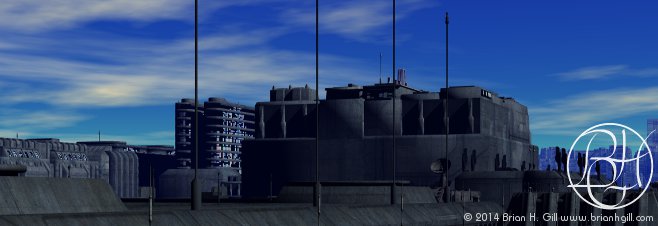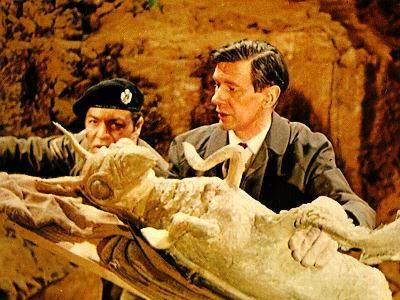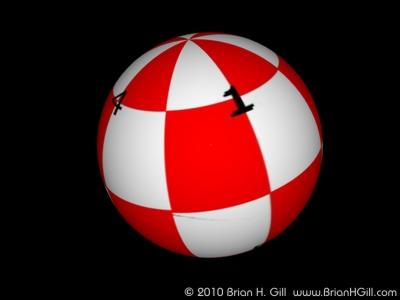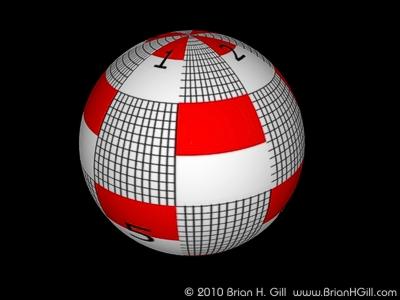Well, yes and no.
For someone who's writing exclusively as an exercise in self-expression, maybe.
A writer who wants other people to read the story - and keep reading it - not so much, in my opinion.
What's in a Name?
Take place names, for example. For someone writing a story in American English about contemporary life in New York City: all they need to do is make sure that they spell "New York" correctly, and keep check out the New York City Web site (www.nyc.gov), or other online resources like Google Maps.No problems.
When your setting is not where you live, and you're portraying people who don't speak your particular dialect: things get interesting.
For example, would someone who grew up in Germany say that he lives in Germany? If he was speaking English, quite possibly. When he's at home, though, he lives in Deutschland. Which is why, here in America, we refer to citizens of the Netherlands as the Dutch. Which is another topic.
So, what about tales of the far future: anything goes, right?
Depends on what you're going for. If your story is supposed to be a cheesy spoof of Saturday matinee serials and the shallow end of science fiction's golden age: I suppose there's a sort of virtue to using names like Magnetonia or Electropolis.
Now that I see it: I actually like "Electropolis."
But, no.
What I was working with today (not all day - but I'm getting off-topic again) was a bit more serious.
I was looking for something to call New York City, about 1,650 years from now.
Sure, I could just call it "New York City," since I'm writing in the only language I'm really comfortable with: English.
But that doesn't help establish or support the setting.
I could make up some bit of gibberish, on the principle that the place would have a new name.
Things Change
That approach is half right. Not the "gibberish" bit: the idea that New York City might have a new name.Or, maybe not.
London, that big city on a river in an island kingdom, has been around for a long time. Almost 2,000 years now (1,967, actually). Back in Roman times, it was called Londinium. (More, at "Roman London," Britain Express)
And, just shy of two millennia later: the name hasn't changed all that much. Mostly, I suspect, because the folks living there speak a Germanic language that was heavily influenced by French-speaking Vikings. Which is yet another topic.
Back to New York City, about 1,650 years from now.
One thing's sure: things will have changed.
I've decided, given what's happened over the last few thousand years, that China has a good shot at being
- Intact as a cultural and political entity
- A major part of the economy and culture of Earth
Like - I haven't forgotten - what people call New York City.
I put New York City through Google Translate, and got 纽约市 (that won't look right, unless you've got a Chinese font. I told Google Translate to give me the result in 'Chinese (Simplified)').
Next, I put 纽约市 in, asking for an English translation. Sure enough: I got New York City.
So, how is 纽约市 pronounced? If you read and speak Chinese: you already know.
To get the answer for me, I went back to the English > Chinese (Simplified) mode, put New York City in and got 纽约市 again. This time I told the software to "Show romanization" (that's a nice bit of software Google's got). (I'm learning to recognize characters - but pronunciation is something I'm not even close to getting right.)
I got Niǔyuē shì.
Which is helpful. Maybe that "ǔ" is roughly the same sound as "oo" (as in too or tool, as pronounced in American English). Or maybe it's more like "uh" like "cut". The American Heritage Dictionary Pronunciation Key says it's the latter.
The "ē" is a little easier - assuming that it's got the same value given in that American Heritage Dictionary Pronunciation Key. That's the "e" sound we have in words like "pet" and "met."
And yes, I know: I don't know how to pronounce Chinese. No offense, but I'm not aiming at linguistic precision here, so much as trying for a plausibly-close approximation. Moving along.
I'm guessing that "New York City" / 纽约市 / Niǔyuē shì sounds a little like "Niuhyueh Shì" in some Chinese dialects. Or maybe "Niooyueh Shì". It doesn't look that much like "New York City" in the Latin alphabet I use - but it doesn't sound all that much different.
I'll sleep on it, but I think that major city on the east coast of North America is called "Niuhyueh Shì" by the time that story's period rolls around.




